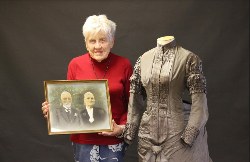Difficult choices for clinical leaders
13 November 2018
Difficult choices for clinical leaders in environment of resource constraints
An informal poll of medical students highlights the difficult choices that clinical leaders have to make in an environment of ongoing resource constraints, according to Professor Murray Barclay, President of the Association of Salaried Medical Specialists (ASMS).
During a presentation to a group of medical students, he asked which of two options they would choose to deal with rising levels of patient need that outstripped annual increases in funding. One option involved accepting the limits on funding and forcing greater efficiencies, while the other option involved advocating strongly for the level of patient need and requesting adequate resources on behalf of patients and staff.
“The results were illuminating,” he says in an article in the latest issue of the ASMS magazine, The Specialist (p13, https://www.asms.org.nz/wp-content/uploads/2018/10/12089-The-Specialist-Issue-116-WEB.pdf).
“While students overwhelmingly saw the benefits of the second option, 94% believed that most medical leaders in New Zealand would choose the first option and tighten their belts accordingly.
“Obviously this wasn’t intended as a scientifically rigorous poll but nevertheless it was a good indication that the future generation of doctors have a pragmatic view of the realities of working in an environment characterised by years of underfunding and workforce shortages.
“They know what should be done to respond to resource constraints and accelerating patient need, but also understand why health managers choose to focus on restricting spending instead.”
Professor Barclay says the consequences of going down that path are already apparent in New Zealand.
“We’re seeing increasing rates of burnout and bullying being experienced by senior doctors, our hospital buildings are crumbling and aren’t up to the job, and patients are struggling to get access to the care they need.
“Patient need is sometimes left to non-clinical administrators to determine, or to the levels of line managers up as far as the Chief Executive, or Health Minister, rather than those trained to understand the needs of patients and what is required to provide the appropriate care.”
Patient advocacy is not always seen as a doctor’s duty but he says it might need to become an integral part of medical training and practice to ensure better patient care.
“We need to encourage the future medical workforce that the ‘easier’ route is not always the best way forward for patient care.”
ENDS


 Public Health Communication Centre: To Avoid A Measles Epidemic, Aotearoa Must Close The ‘Immunity Gap’
Public Health Communication Centre: To Avoid A Measles Epidemic, Aotearoa Must Close The ‘Immunity Gap’ Heritage New Zealand: Kid-friendly Archaeology Resource Kit Launched As Part Of Archaeology Week
Heritage New Zealand: Kid-friendly Archaeology Resource Kit Launched As Part Of Archaeology Week Tatai Aho Rau Core Education: Cyber Skills Programme For Tamariki Recognised At Māori Language Awards
Tatai Aho Rau Core Education: Cyber Skills Programme For Tamariki Recognised At Māori Language Awards Waitaha Kapa Haka: Waitaha-South Island Kapa Haka Celebrates 60th Anniversary
Waitaha Kapa Haka: Waitaha-South Island Kapa Haka Celebrates 60th Anniversary Braden Currie: Sets Sights On The Ironman North American Championships In Texas
Braden Currie: Sets Sights On The Ironman North American Championships In Texas Whanganui Regional Museum: Historic Wedding Dress Unveiled, A Piece Of Marton’s Heritage
Whanganui Regional Museum: Historic Wedding Dress Unveiled, A Piece Of Marton’s Heritage